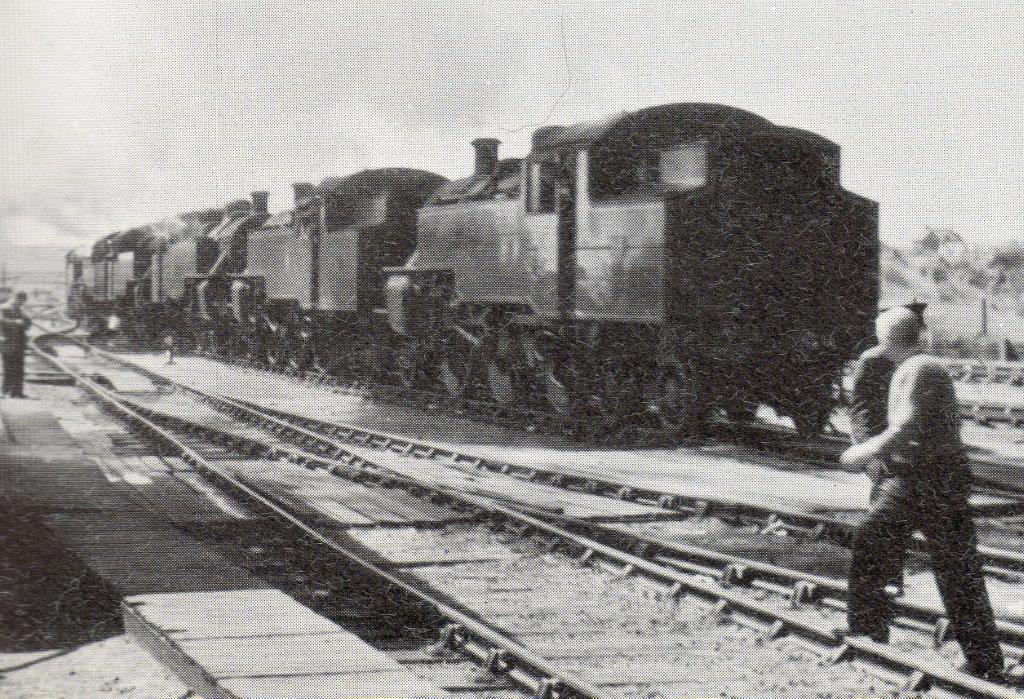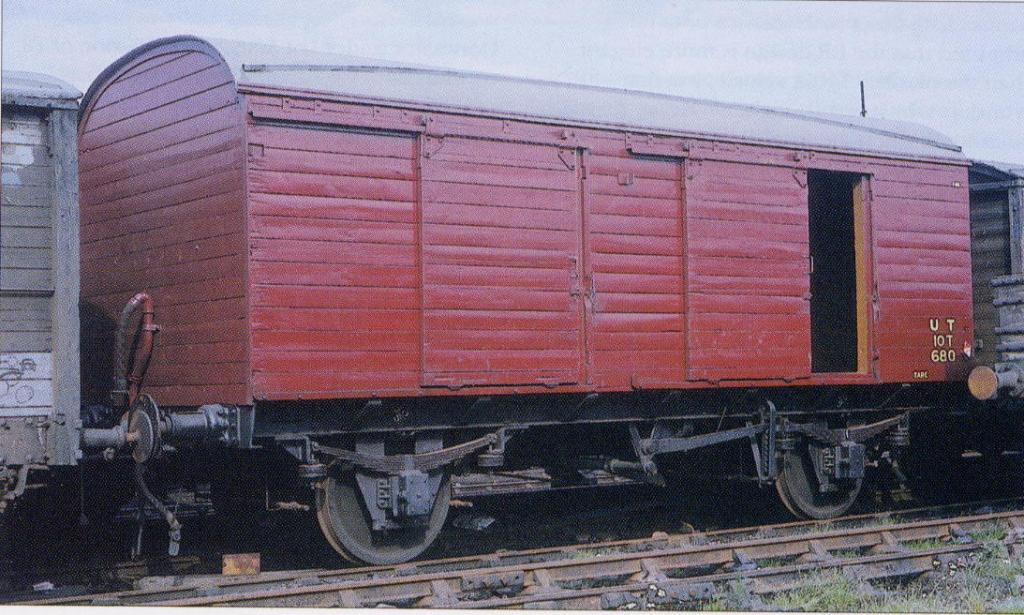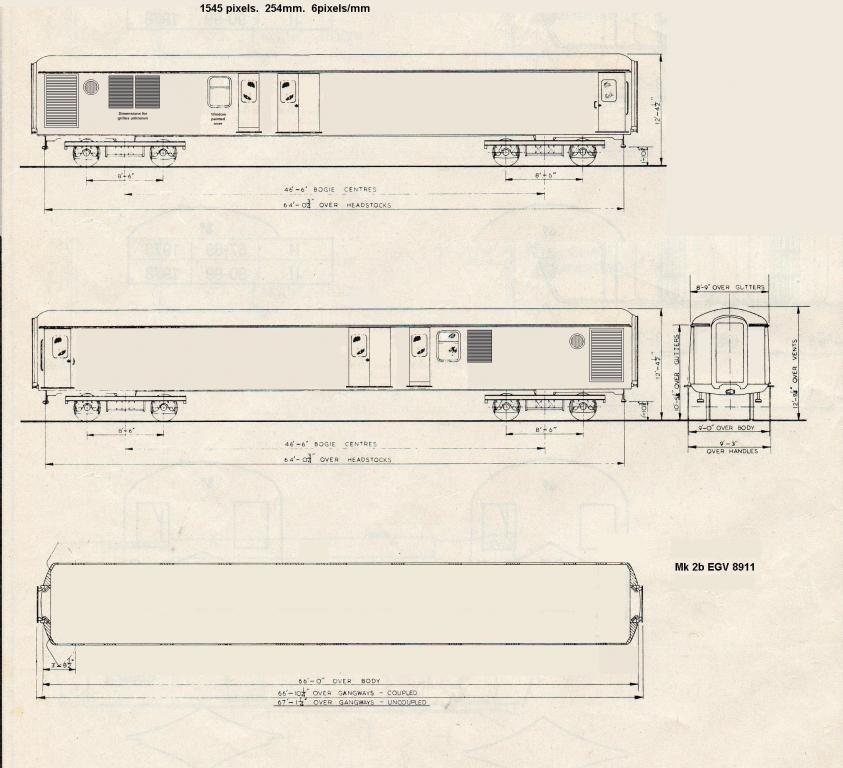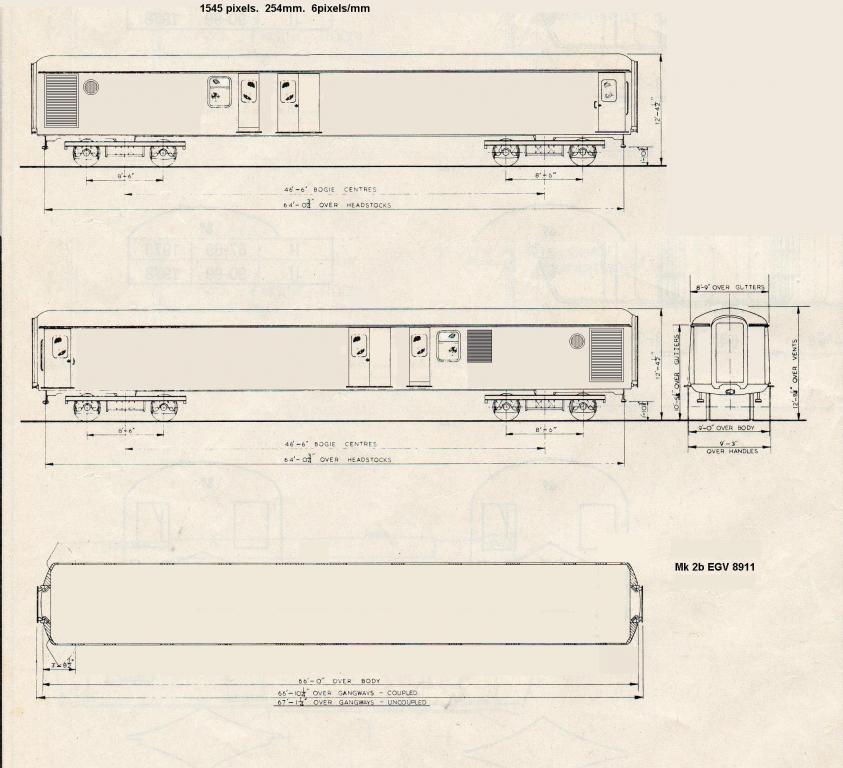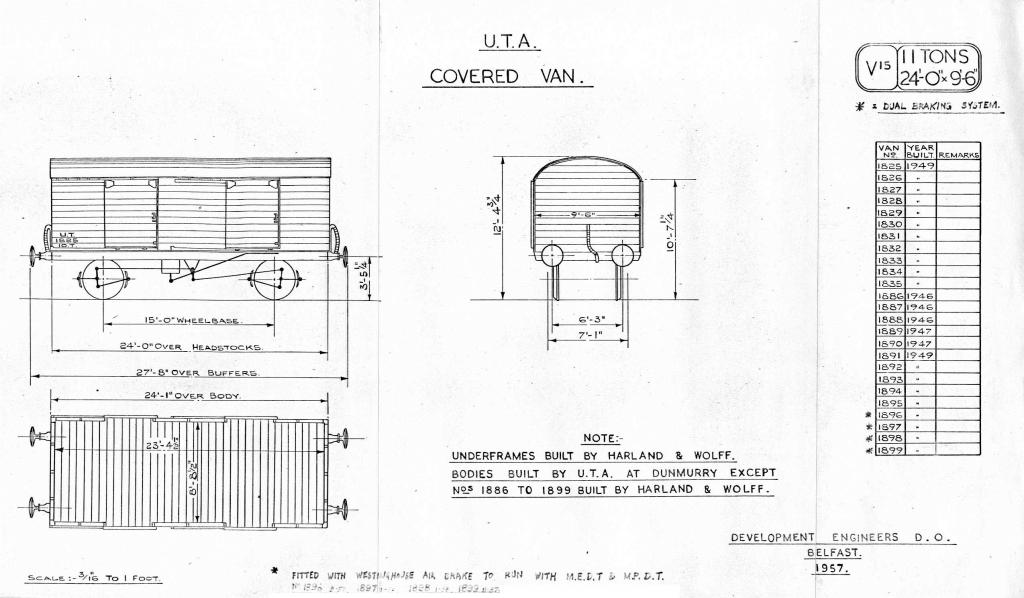-
Posts
547 -
Joined
-
Last visited
-
Days Won
1
Content Type
Profiles
Forums
Events
Gallery
Blogs
Store
Community Map
Everything posted by Dhu Varren
-
The problem here would appear to be the lack of, or very poor communication. Not hearing anything about an order, and not being able to get a response from the retailer can be extremely annoying and frustrating. A quick update on the status of an order is not much to ask, after all, the customer does not have a crystal ball. Even the website is not kept up to date. Orders I placed and received years ago are still showing as "order pending" Like others in this thread, I have found Gareth, as a person, very friendly and helpful, but unfortunately his lack of communication lets him down.
-

Steam In Northern Ireland
Dhu Varren replied to Dunluce Castle's topic in Photos & Videos of the Prototype
Found it. The locos with bunkers nearest the camera would have arrived from Derry, having run round their trains at Coleraine and arriving bunker first at Portrush. The others would have arrived from Belfast, or other places south of Coleraine. -

Steam In Northern Ireland
Dhu Varren replied to Dunluce Castle's topic in Photos & Videos of the Prototype
This was for pathing purposes. Only one path was required, rather than six or more paths for single light engines. I am not sure if all the locos would have been working, I would have thought that the lead engine would have done all the work, but I am not an expert on steam loco operation. I do have a picture, somewhere, of six Jeeps leaving Portrush together, but I can't lay my hands on it just now. -

Steam In Northern Ireland
Dhu Varren replied to Dunluce Castle's topic in Photos & Videos of the Prototype
Multiple Jeeps, six or even more, could be seen running together as a train from Portrush to Coleraine for turning and servicing having all worked excursions to Portrush earlier. -
According to my book on Mk 2s, they were "mounted on accommodation bogies for haulage to Harwich Town where they were loaded onto BR train ferries". The book does not mention whether this was by rail or road, but it does say that the earlier NIR order for Mk 2s was moved by rail on accommodation bogies from Derby to Ardrossan, so it is very likely that the CIE coaches went the same way, but to Harwich.
-

Steam In Northern Ireland
Dhu Varren replied to Dunluce Castle's topic in Photos & Videos of the Prototype
The clip of the triple headed Jeeps was taken at Portrush. The steeply graded remains of the line down to the harbour was often used to stable excursion trains until it was almost time for the return trip, when it was common to need two Jeeps to drag the coaches up the hill into the station. However, if rail conditions were really poor, then three Jeeps were needed. Quite a spectacular sight, and sound. -
Seems to be a regular occurrence with MSB. Almost exactly two years ago I ordered, and paid for, an NIR 209 River Foyle as it was listed on the website, unknown to me it had not even been released, and also 201 and 111 sound decoders. After a couple of weeks and no sign of the goods, a phone call revealed the 201 had yet to be released, but was expected in about six months. The decoders were out of stock, but I would get them in about six weeks. After a couple of months, a phone call again revealed there was still a backlog of orders for the decoders, but they would let me know when they became available. In June, while on a family visit to NI, I received an email to say the decoders were now in stock. A quick trip to Belfast enabled me to collect my order, plus a decoder for a 141. That was a total of seven months from placing the order to getting the goods. As for the 201, as we all know, I am still waiting, two years from ordering. Why advertise something for sale, when you know it has not even been released. By all means take pre-orders, like Rails, Hattons and others, at least the customer knows there will be a wait.
-
Thanks for posting your drawing. I can now update my own drawing. My drawing is basically an official NIR Mk2c drawing scanned and reworked on my PC copying and pasting original windows and doors, with extra features added as required. David
-
Probably to do with the requirement to be able to run at passenger train speeds, and not having freight type suspension.
-
Here are a couple of pictures of Brown vans (well one is a green van), showing the differences in underframes. The chassis on the Hornby Horse Box, and fitted to various other wagons, is exactly 14ft wheelbase, however the chassis is too short. Since the chassis is readily available on the secondhand market, it would be easy enough to extend the length using a second chassis. Unfortunately, the brake gear and W irons are really only appropriate for the 15ft wheelbase chassis.
-
The windows that were 'filled in' are not visible in the sense of an aperture. There is nothing physical there to be modelled. There may well be some sort of distortion in the panelling where the windows were, but not something that would appear in a drawing. The window beside the guards door has either had the glass removed and replaced with a sheet, or the glazing is still there, but either way it has been painted over with the frame still there. Drawing amended. The one glaring omission that was not mentioned, are the two grilles that should be on one side. I have yet to find dimensions for them, as I do not have a decent picture of that side, and forgot that they were not on the drawing. Temporary amendment done.
-

Which DCC sound chip for MM 141/181
Dhu Varren replied to Noel's question in DCC, Electrics and Electronics
I would agree entirely with irishthump that the quality of the sound from Mr Soundguy is not an issue, it is how the sound responds to changes in what the loco is doing is the problem. I was running both BMS Zimo decoders alongside Loksound decoders, and try as I might, I just could not get the Zimos to respond anywhere near like the Loksounds. In the end, I disposed of the Zimos, and replaced them with Loksounds. -
-
The nearest thing would be a Lima Mk 2b Brake 1st, as the Gatwick Gen van was converted from an NIR Brake Generator Van, which in turn started life as a Mk 2b Brake 1st. Much modification is required, including removal of the passenger accommodation.
-

Which DCC sound chip for MM 141/181
Dhu Varren replied to Noel's question in DCC, Electrics and Electronics
When I fitted my first two 141s with sound, Mr Sound Guy from DCC Supplies, I fitted one with a modified bass reflex speaker using a similar method to the above, and one was fitted with a standard 40 x 20 speaker using the cradle provided. In all honesty, sound wise, I could not tell them apart. I don't believe these bass reflex speakers are all that they are cracked up to be. Ultimately, I replaced the modified speaker with a standard one, and used the modified speaker in another loco that required a slightly smaller speaker. -
Here is a link to the same subject on rmweb http://www.rmweb.co.uk/community/index.php?/topic/92078-brown-vans/
-

Which DCC sound chip for MM 141/181
Dhu Varren replied to Noel's question in DCC, Electrics and Electronics
Yes Noel, I prefer the modified Loksound to the BMS Zimo. I find the Loksound decoder has better synchronised sound with movement than the BMS Zimo, it also has manual notching which the Zimo doesn't. I don't see how you can fit an 071 sound decoder to a 141/181, as they don't sound anything like an 071. I think the modified Loksound sound as per the video sounds pretty much like many of the 141/181s did sound. As for fitting a speaker to a 141/181, it could not be simpler. There is already a speaker mounting fitted to the loco, all you need is a 40mm x 20mm speaker to mount on it, and attach the wires to the circuit board. -

Which DCC sound chip for MM 141/181
Dhu Varren replied to Noel's question in DCC, Electrics and Electronics
I have both Mr Sound Guy (Belfast Model Shop), and the sound Glenderg posted the link to, which I find to be the better of the two, even though it is not strictly correct, being a 16 Cylinder engine instead of an 8 Cylinder. -
Twenty eight years ago I invested in a Badger 350 single action external mix airbrush, which I used to do loco resprays for the local modelshop. I still have it, and use it on a regular basis. I have lost count of the number of locos and coaches I have resprayed. It is simple to use, and provided it is kept clean, like any airbrush, gives an excellent result. As well as flushing the airbrush out after each spraying session, every so often I strip it right down to its basic components, and soak them in cellulose thinners, which will loosen any hard to get at deposits of paint. I have thought about investing in a new airbrush, but, if it ain't broke, don't replace it.
-

Model Era - Is it an age thing or am I just a dinosaur?
Dhu Varren replied to Noel's topic in General Chat
I was also familiar with the GNR AEC and BUT sets, as I used to travel regularly on 'The Derry Road' to Portadown. My one real memory of AEC sets was when, as a child, I travelled on my own to Portadown to stay with family near there. When it was time to return home on a service that was always an AEC set, my aunt, as a birthday treat, upgraded my 3rd class ticket for a 1st class one, so that I could travel behind the driver, almost a cab ride. Imagine the disappointment when the rostered AEC was replaced by, of all things, a steam train! Changed days. Sadly, the opportunity never arose again, although I did travel quite often in BUT sets, but not behind the driver. -

Anyone tried a Dapol 52 under a Silverfox A Class?
Dhu Varren replied to BosKonay's question in Questions & Answers
Having posted the above, I suddenly had the thought that I have never seen a Hornby Class 55 power bogie in the flesh. I had assumed that the drive axles are simply a clip fit into the bogie as with other current Hornby power units. If they are not clip fit, then there would be a different process for replacing the tyred wheels. Perhaps someone who knows could let me know. -

Anyone tried a Dapol 52 under a Silverfox A Class?
Dhu Varren replied to BosKonay's question in Questions & Answers
With all this talk of using two Hornby Class 55 motor bogies to power an A/001 Class locomotive, but not wanting to have traction tyres, I decided to look into the matter. My investigation revealed that although traction tyres are fitted to one side of the motor bogie, there are pickups already fitted to both sides, half the job already done. To get rid of the traction tyred wheels, all that needs to be done is to remove the drive axles from the bogie and knock the tyred wheel off each axle using a drift (an old 2mm coach or wagon axle will do the trick) and a small hammer. Using a support for the wheel on the top of a vice, tap the axle out. Before removing the wheel, cut a piece of plasticard, or metal, to fit between the wheels as a back to back gauge for the reassembly. Using one of the wheel sets from the trailing bogie, or purchase a new set of trailing bogie wheels, remove both wheels from an axle, (if I remember correctly both wheels are insulated) and fit one to each of the drive axles where the tyred wheels were. Press the wheels onto the axles carefully, a little at a time, checking to ensure the wheels are going on straight (place on a flat surface and let the wheelset roll, if the wheel wobbles, straighten it and press it on a bit further). Once the wheel is fully on and the back to back measurement is correct, refit the drive axles to the motor bogie and test. Bob’s your uncle, job done. -

Model Era - Is it an age thing or am I just a dinosaur?
Dhu Varren replied to Noel's topic in General Chat
Have to disagree in part about the MPDs being the most uncomfortable things ever to run on rails. The early batch converted from the Festival coaches have to be the most comfortable DMUs ever, with proper seating, in both open and compartment formats. I would agree that the later batches with their bus type seating were very much on the basic side. My greatest memory of that era is of travelling from Derry to Belfast as a child on an MPD set, with bus seats, and once underway being invited into the guards/drivers area for a cab ride all the way until the approaches to York Road, when I had to leave so as not to be seen by anyone in authority on arrival. Halcyon days. I have had a soft spot for MPDs ever since. -
At last I have found a shade of blue that I think looks right. It is a very close match to Ford Monza Blue, thanks 33lima for that suggestion. What a job getting there though. The first option was to obtain some Precision Paints NIR light blue, but unfortunately carriage charges ruled that out at £15 for a tin of paint!. Followed up the Ford Monza Blue suggestion, but the local Ford dealer denied that the colour even existed. Managed to source a small spray can online, with FREE carriage, which arrived as Vauxhall Mustard Yellow. A quick message to the supplier, and the correct can was despatched. Liked the colour but not the paint. Sat down and experimented with different mixes of Revell 50 and 52. Finally settled on 3 parts 50, and two parts 52, the result being very close to the Monza Blue, and best of all, the paint is readily available at the local toy/model shop. Thanks again to all those who took the time to respond, and whose input was very helpful.
-
I purposely only mentioned the body was suitable, as I had not looked into underframe detail. Besides, the Mk 2d is more readily available both new and secondhand than the Mk 2f.
.png.c363cdf5c3fb7955cd92a55eb6dbbae0.png)

